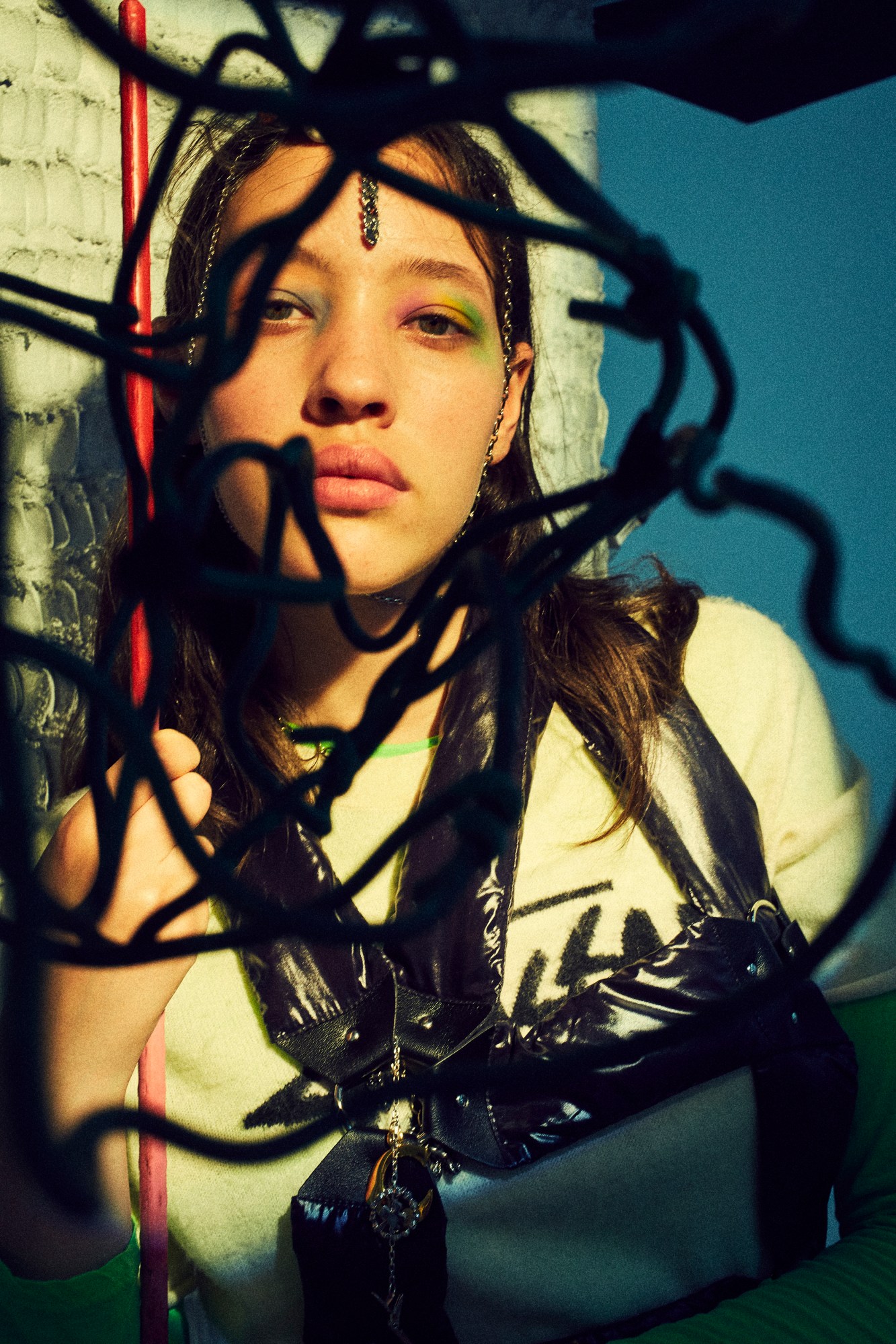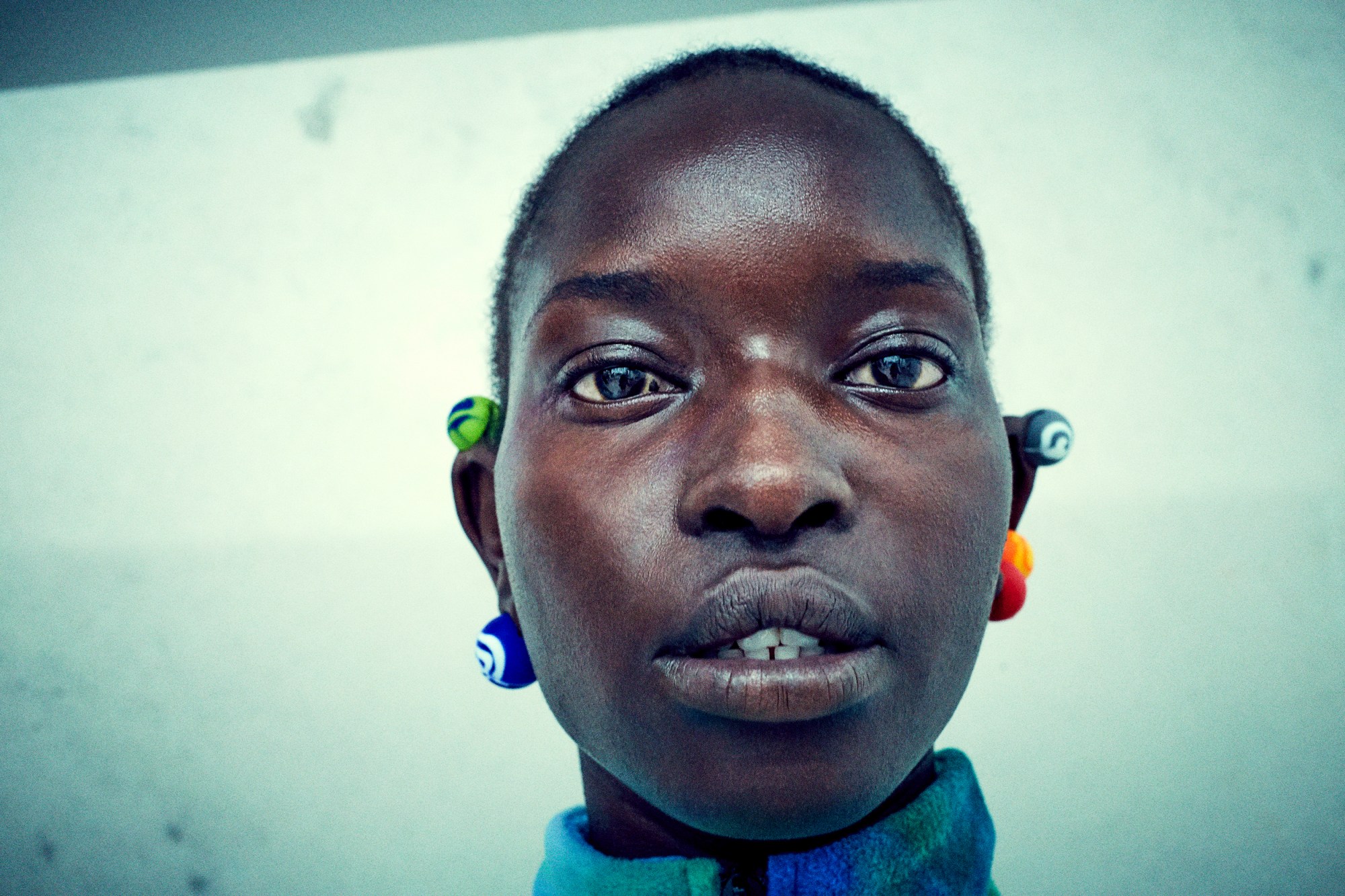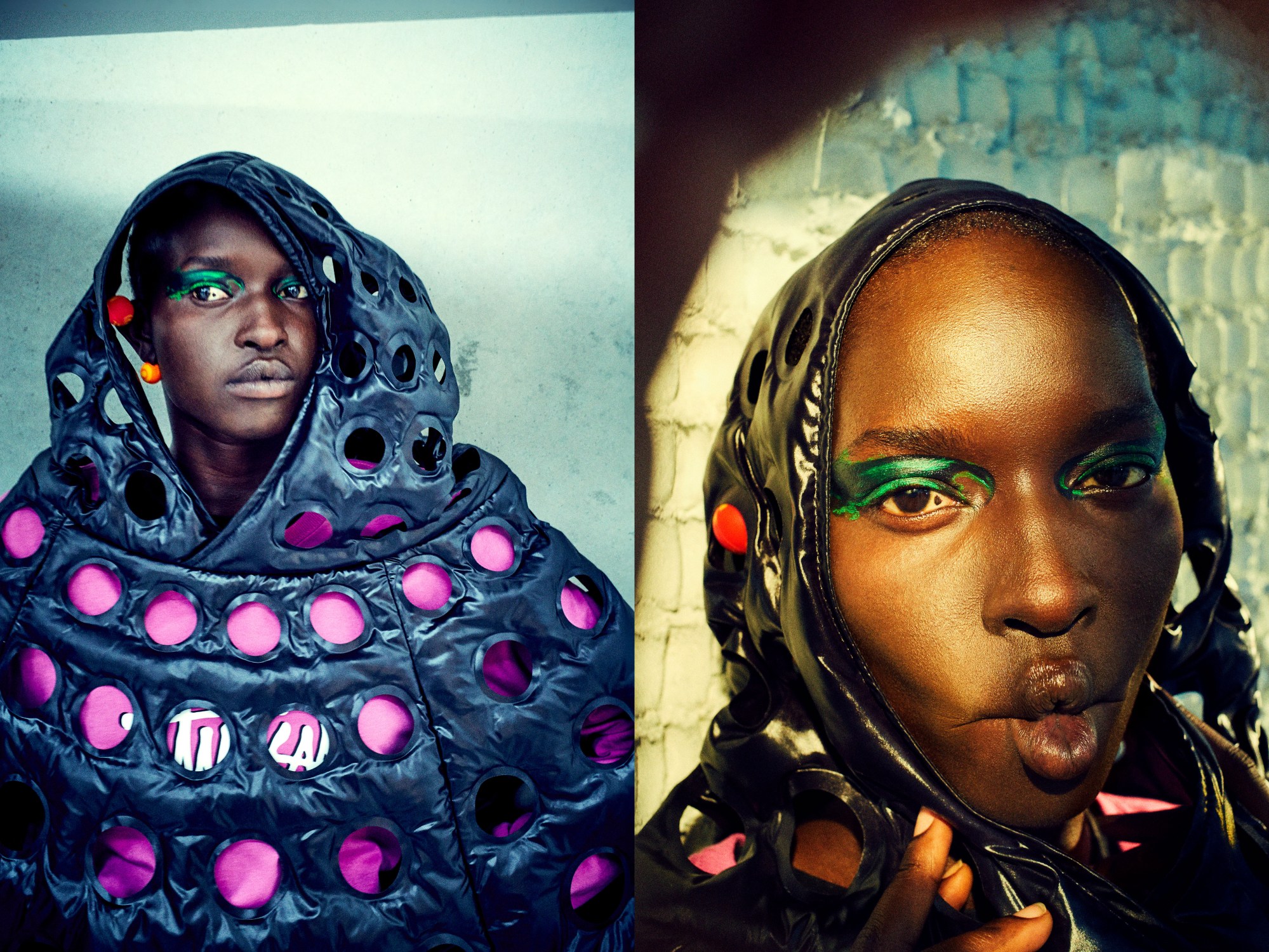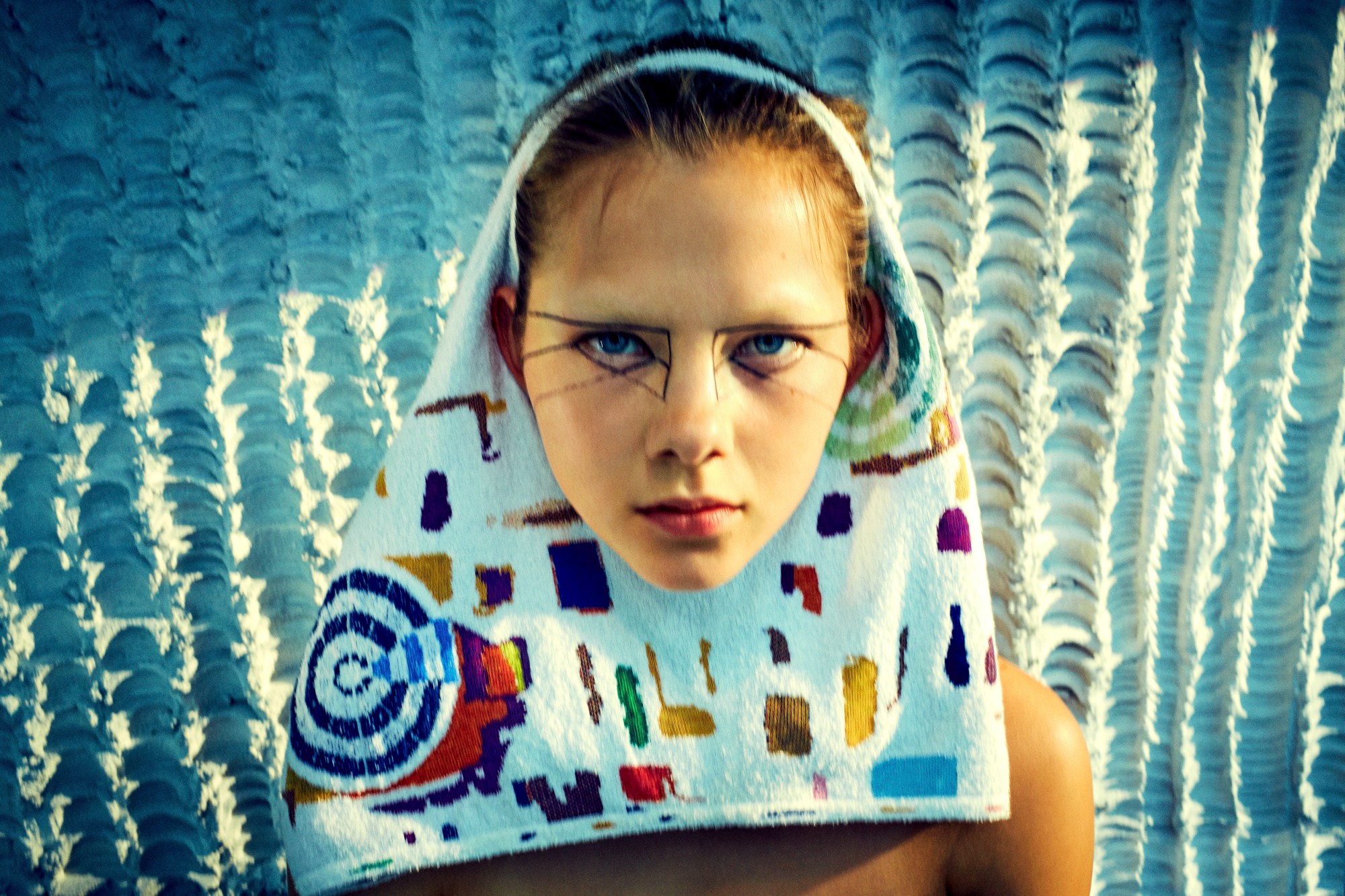Although fashion photography makes up some of Charles Dennington’s most public work these days, his career overall is better defined as multidisciplinary. As a fashion photographer he has a slew of magazine covers to his name, but it’s his past work in fine art photography and sculpture that make it all possible. Elements from Charles’ early art practice: texture, obscured faces and dappled lighting, all remain throughout his work today and act as a bridge between his artistic and commercial projects, as well as timestamps of his own past and present.
A new beauty series, made in collaboration with makeup artist Joel Babicci and fashion editor Charlotte Agnew, is the latest project that highlights the common threads throughout Charles’ work. The series features portraits of new faces shot against custom backdrops, made by Charles, with their faces often partially obscured. We sat down with Charles to talk about the series and how it could exemplify his past, present and future work.

What was the catalyst that brought this series to life?
I was just really interested in putting things behind, essentially a beauty picture, so the subject could break that texture and have the painted colours appear in a surprising way. So that was the starting point for me, painting the backgrounds, making a textured wall — I really wanted to do something with concrete that was really textured.
And that’s what lead to you making the textured concrete wall in the background of these shots. It’s really beautiful the way the concrete ripples capture the light behind the subject.
I’m so into it, I just wanna have a house that I can render like that.
So yeah, I was already developing that stuff in my garage bit by bit. Then Joel emailed me out of the blue and was like, ‘Can we do a beauty story, but sort of a bit punk and push the makeup to almost the edge of ugliness but beautiful?’ His resulting makeup looks gave me all sorts of ideas about extra ways to obscure the image, like with shadows and things in front of the lens and my backgrounds. And then we brought Charlotte on and she went really crafty and amazing with styling it.

This series refers a lot to your own past art practice. How did it feel to have collaborators working on these ideas now?
Usually with my past portraits that are using drastic shadows and stuff to obscure the face, I’d shot them with just me and the person I was photographing. Often it would be just me and someone from my family, which is something that I’ve just realised recently. But with this shoot, I realised if I didn’t get other people involved then it just wouldn’t ever happen. It bridges the gap between what I was doing earlier and the kind of work I’m doing now. It wouldn’t have happened without collaborators — or it would have but it would be me doing face painting and it wouldn’t look anything like this [laughs].

I have to admit that I was initially only familiar with your work in fashion, even though you’ve exhibited your art practice at places like the Australian Centre for Contemporary Art. Can you tell me a bit about your background with an art practice?
My background is in photography. That was until I met a few friends who were having exhibitions and I started having a sculpture practice. And just thinking about objects and space, in relation to one another and how simple that is as a device to create meaning between objects and space.
The first sort of shadowy pictures that I did, it was a picture that was kind of an accident done in my backyard — well I did it on purpose but I didn’t mean for it to come out quite as obscured. I was really fascinated by that image, I kept it in a box and was just waiting to bring it out and do something with it. After doing all this sort of sculpture work I started bringing it back. It’s photography but it’s kind of like sculpting. You’re sculpting the image when you’re making a field of shadow and highlights that are kind of floating in space. I liked the weird contradiction of the space in the portrait, the sculpture becomes overbearing and you almost can’t see the person. It’s like a contradiction of what a portrait should be.

So that accidental image became a bridge between sculpture and photography for you then?
Yeah, well I guess it wasn’t that much of an accident — I was exploiting dappled light, I was arranging with my hands in front of the sun. I grew up on this overgrown property and used to get around the creek. I’d be there everyday that I wasn’t at school or whatever. And there was a dappled light in the creek under the canopy that I was sort of imagining little apparitions and things. I was trying to create the apparitions I saw when I made that image, almost like a face or a mask. I’ve been doing those kinds of pictures very slowly over the past 15 years or so. And forgetting about them and coming back to them after a while.

That exploration of light also finds its way into your fashion work. I’m remembering a shot you did of Hugh with this, kind of, pinpoint lighting.
It’s funny, I’ll find myself on a job in some inner-city park that happens to have a rainforest in the middle of it, like there’s this one in Woollahra. And I’ll be working under the canopy and I’ll have this little epiphany moment where I’ll be like, ‘What a minute, this is where I feel so at home.’ I’ve started realising that on a few shoots recently — that I come to think, ‘I really need to do me’. I can bring it in cheeky little ways, little canopies or little bits of pinpoint light, and they’re references to me and inevitably could become a nice little thread for people to recognise.

Do you see your work in fashion photography and your more personal artistic work as separate entities?
I see them as being two separate things floating around and then occasionally bumping into each other.
In orbit of each other.
A bit, yeah.

Credits
Photography Charles Dennington @ M.A.P
Styling Charlotte Agnew
Beauty Joel Babicci
Hair Joel Forman @ Lion Artist Management
Fashion assistants Luca Ward and Daniel Fremlin
Models Beti @ Chic Management, Fabienne @ Priscillas, Phoebe @ Kult Australia, Saria @ Priscillas
